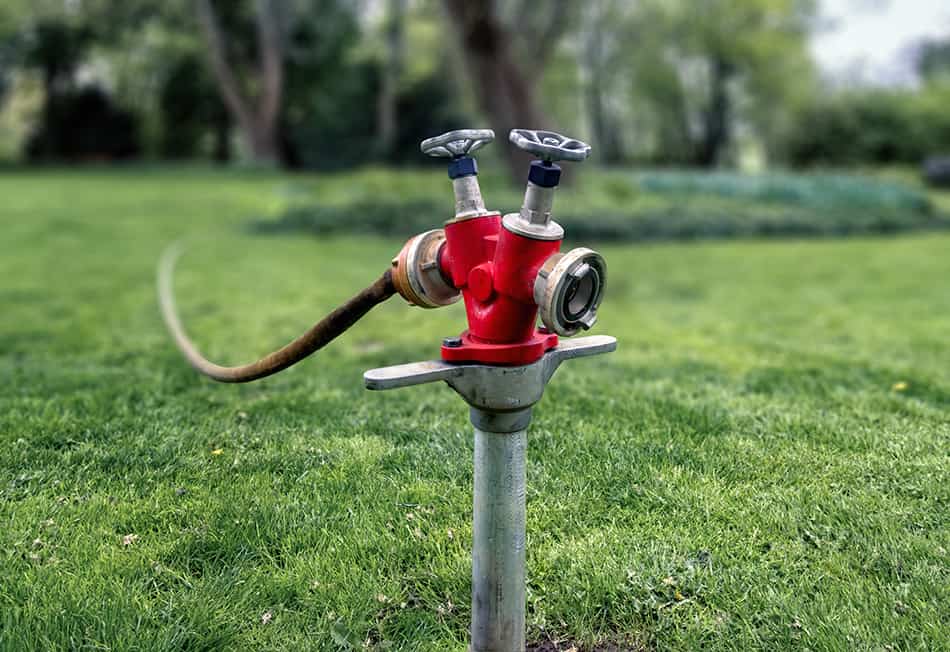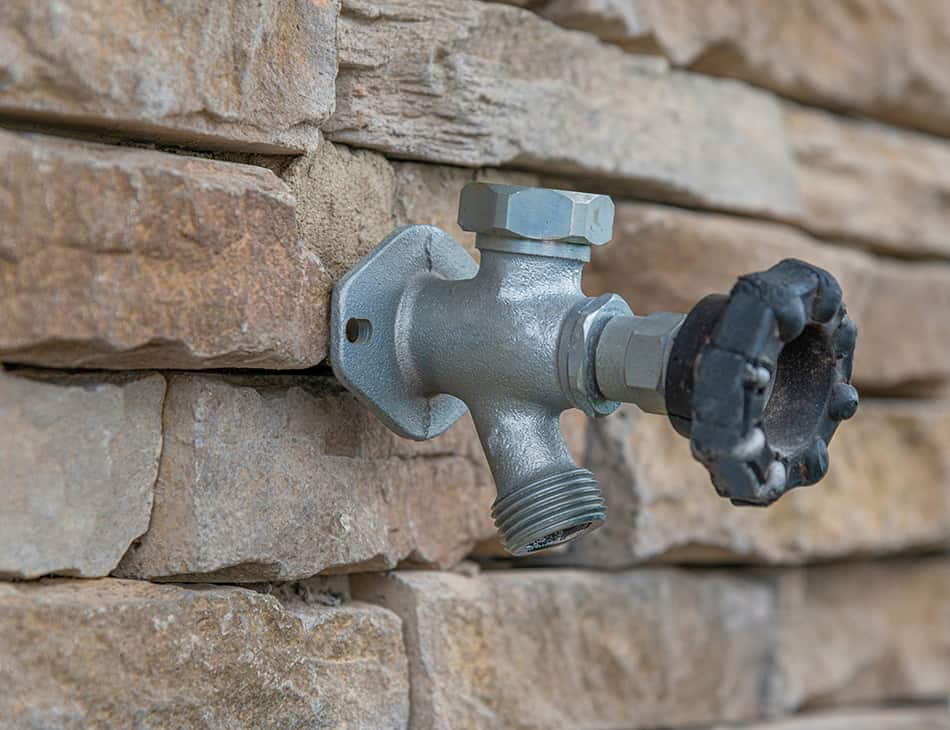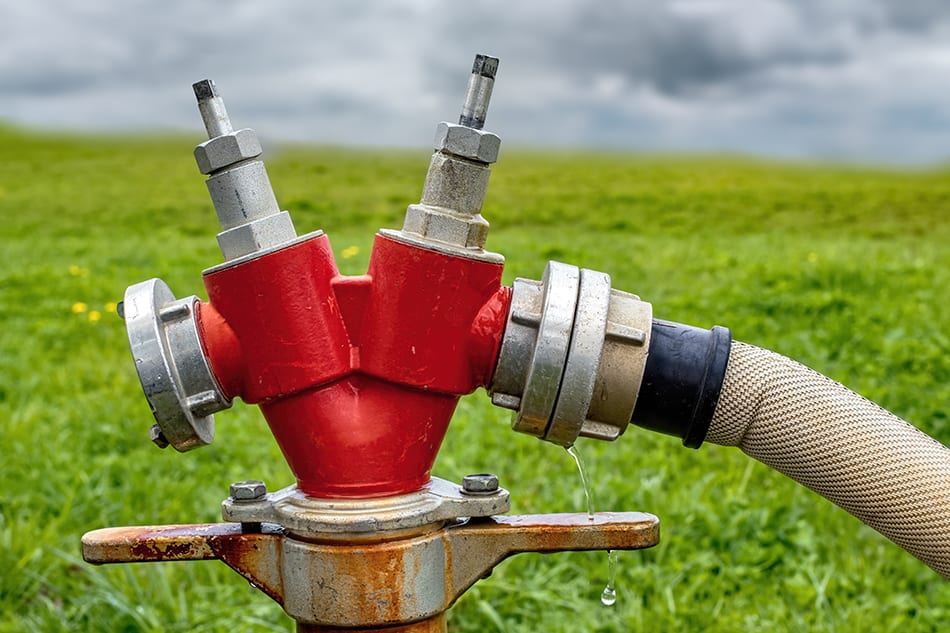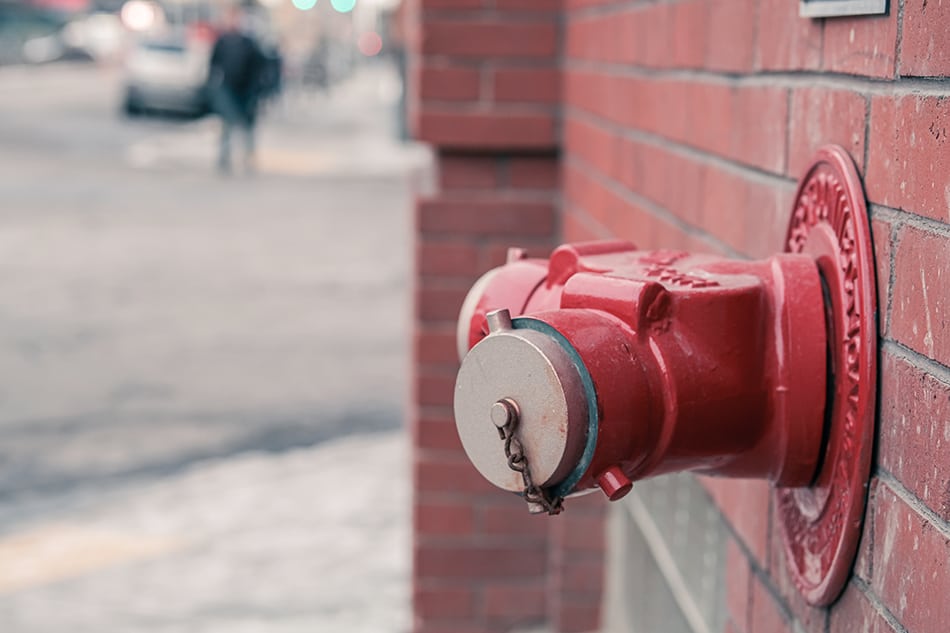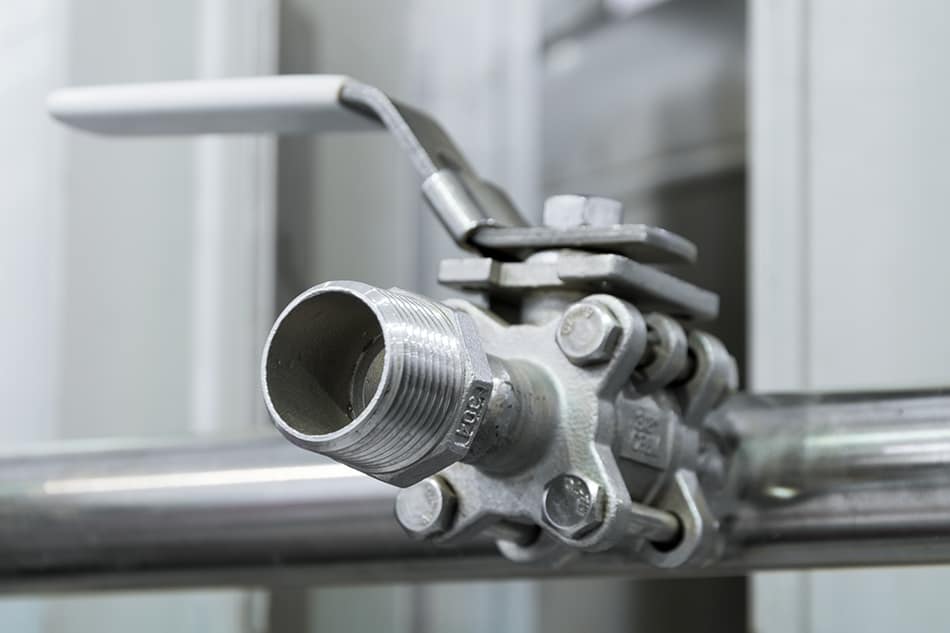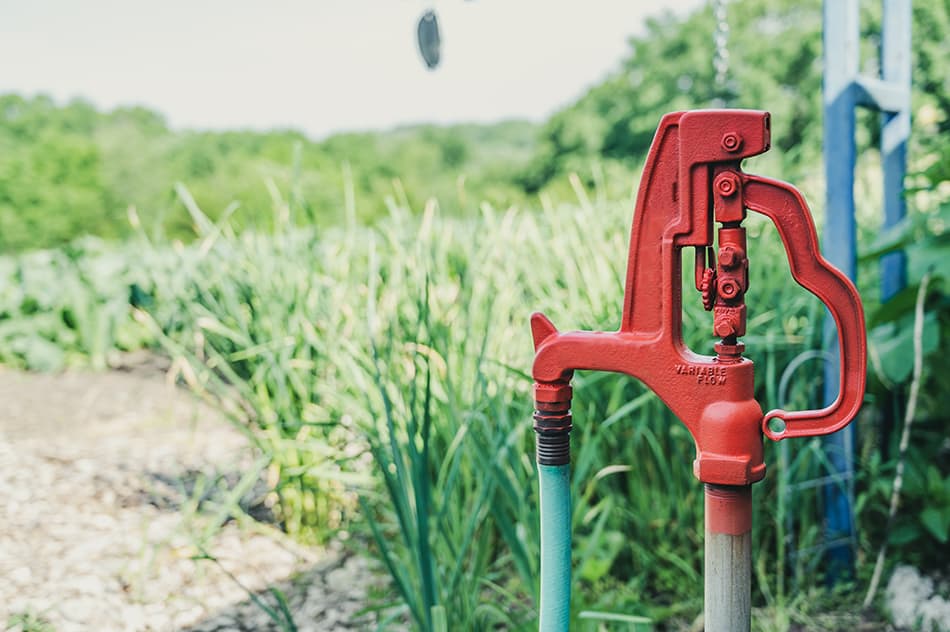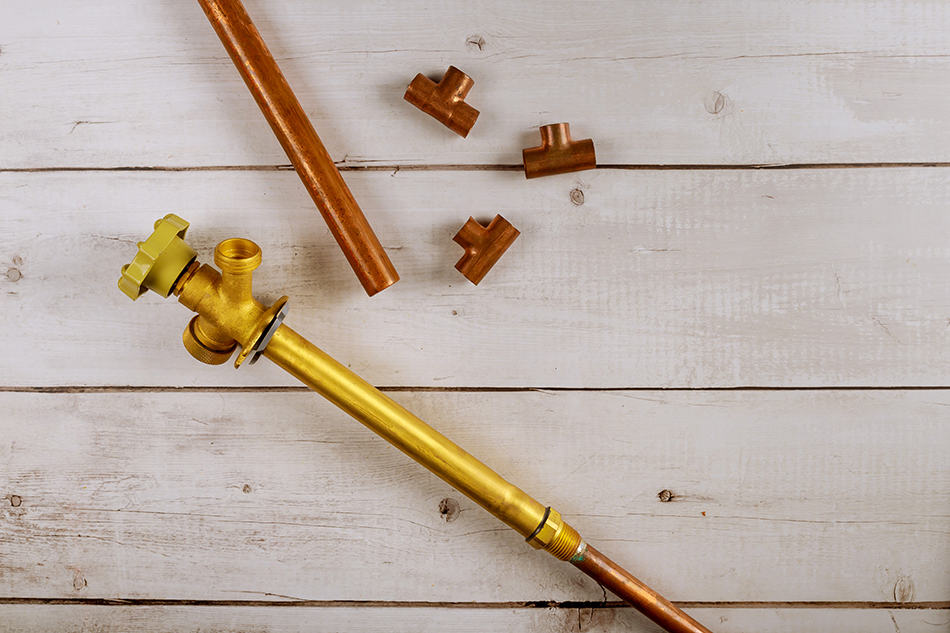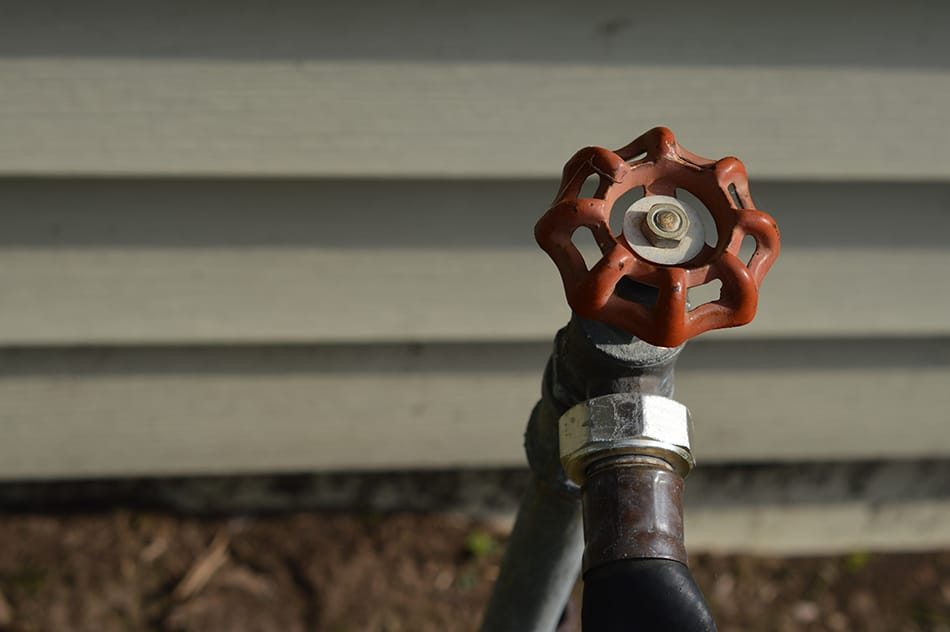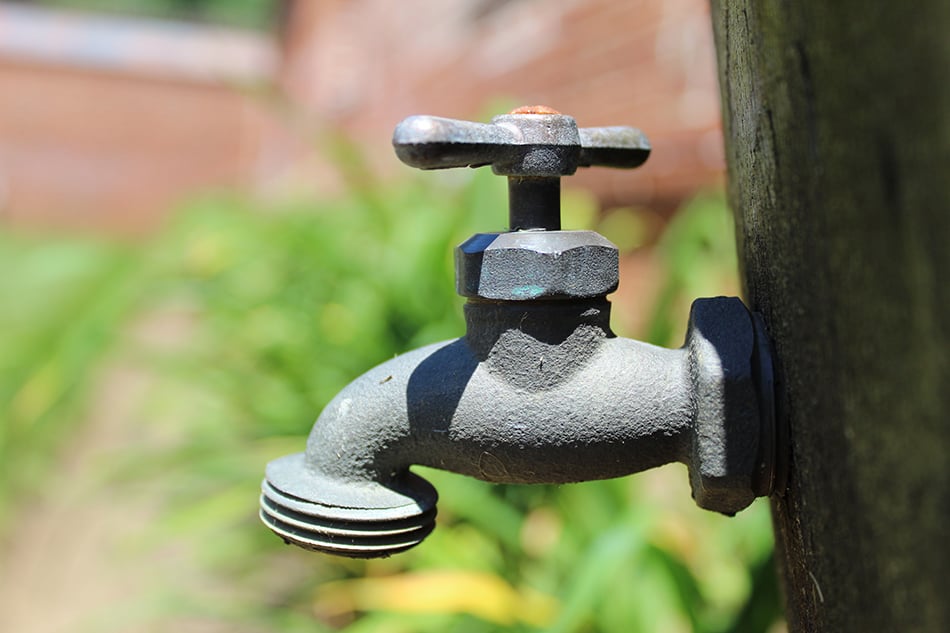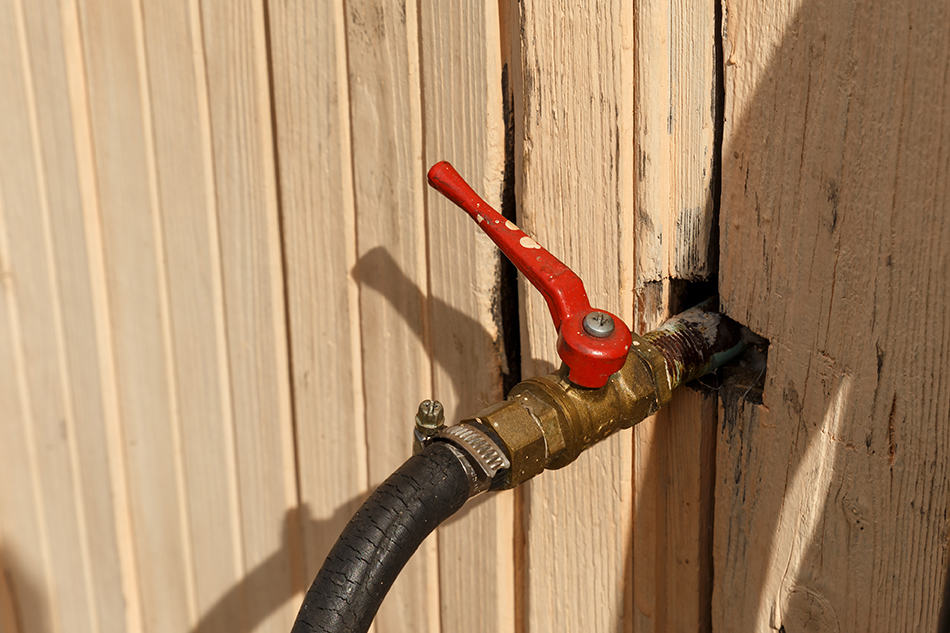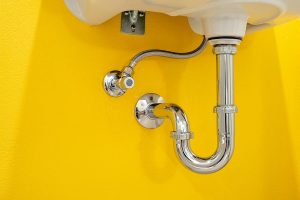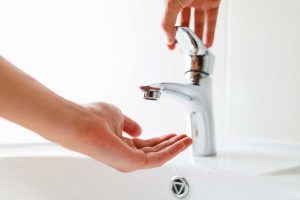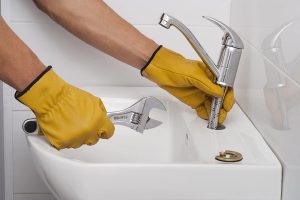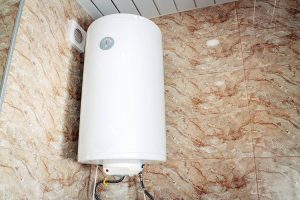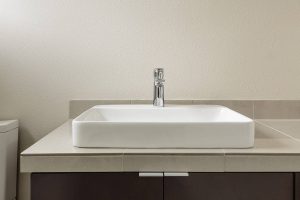Outdoor faucets are paid little attention until they go wrong. They offer a convenient water supply in the backyard that makes it easy to irrigate plants, wash hands or fill up children’s paddling pools. Most people take their outdoor faucets for granted and don’t realize how beneficial they are until they find themselves without one.
Here we discuss the various types of outdoor faucets available, along with their individual advantages and typical price points. This will enable you to have all the information you need when it comes to installing or replacing your outdoor faucet.
Outdoor Faucet Types
Most homes come equipped with outdoor faucets, and you may never have put much thought into what type of faucet you have in your backyard.
However, there are different types of outdoor faucets that offer various benefits, such as saving you money or keeping your water supply clean, so it’s worth considering investigating your current outdoor faucet and potentially replacing it with something more suitable for your family’s needs.
Spigots
These are the most common types of outdoor faucets found on residential properties and are also known by the name of ‘hose bib’ if they have threading on the end that allows them to be connected to a hosepipe.
The main parts of an outdoor faucet include a handle, a packing nut, a packing washer, a spindle, and a spigot. They work by an internal compression valve that blocks the flow of water when the handle is turned. To release the valve and allow water to flow through the spigot, you would turn the handle to the left while turning it to the right, screws the valve down, and closes the compression valve to turn off the water flow.
These types of outdoor faucets are typically fixed to the rear side of a property in a backyard, though in some cases, they might be on the side or at the front of the property. They are an ideal place to wash hands after getting dirty in the garden or for filling up a watering can to irrigate plants. Hose bibs that have a threaded head so that a hosepipe can be screwed onto them make it easy to water the lawn or wash the car.
You could also connect other garden irrigation systems to a hose bib via a hose, such as sprinklers. Spigots are most commonly made from plastic or metal, and the type of material they are constructed from will play a big role in their price. A zinc, brass, or steel spigot will be the most cost-effective, whereas an ABS or die-cast aluminum hose bib will be the most expensive.
The main issue with these types of outdoor faucets is that they don’t perform well in cold temperatures because they aren’t weather-proof. There can be water left sitting inside the faucet itself that can freeze in low temperatures, causing damage to the spigot when the ice expands.
Yard Hydrants
Yard hydrants are one of the more costly options for creating access to water in your backyard, but they do have a number of distinct advantages over other types of outdoor faucets. Yard hydrants, unlike many other types of outdoor faucets, are connected to underground pipes supplying water rather than being linked directly to your household water supply.
These water pipes are much better insulated compared to those in the home and therefore, they won’t freeze and will ensure that you have access to running water at any time of year, even in freezing temperatures or very severe climates. Another big benefit to yard hydrants is that they don’t need to be close to the house.
If you have a large yard, you could install a yard hydrant anywhere on it, provided there are water pipes running beneath your land. This can make lawn irrigation or watering plants much easier at the back of your property because you won’t have to run a very long hose all the way from your house and can use the yard hydrant instead.
Yard hydrants are also incredibly easy to use. You simply pull the handle up, and water will flow out. The further you pull the handle up, the more powerful the water pressure will be. Yard hydrants can cost anywhere from $100 to $500 to be installed, with the main factor affecting this being how far from the underground water pipe they are situated.
Wall Hydrants
Wall hydrants, as you might expect, are a type of hydrant that is fixed to an exterior wall of a property. Unlike yard hydrants, these are connected to the home’s water supply. They are unique in that they are operated via a key, so anyone without a key will not be able to turn on your wall hydrant and allow water to flow out.
These types of outdoor faucets are fairly expensive to have installed, which may be one of the reasons that they aren’t very common. For a frost-proof enclosed wall hydrant to be fitted to your property, you would be looking at the cost of around $400- $500.
Ball Valve Faucet
This type of faucet can be found both inside and outside of properties. Within the home, it is most commonly used as a shut-off valve in plumbing, as the way it operates does not allow for any amount of water to seep through or drip out; it is either on or off, there is no in-between. The ball valve faucet is so-called because it uses a ball as the mechanism for controlling water flow.
A ball sits inside the faucet that has a hole in it. When the handle is twisted to the on position, the ball is moved onto its side, and the hole allows water to pass through. When the handle is twisted to the off position, the ball moves onto its other side, and the hole is plugged to block any water from getting through.
This type of faucet is common in backyards because different levels of water flow are not important for landscaping requirements, and a simple ‘on’ or ‘off’ will suffice. They are usually attached to the back of a property and connected to the home’s water pipes. Ball valve faucets are usually made from brass and are inexpensive to buy.
Frost Proof Faucets
These faucets work in a similar way to traditional spigots or hose bibs, with one important improvement that makes them suitable for use in cold temperatures.
These outdoor faucets have a metal inner tube inside that is long enough to extend into the house. The valve that controls the water flow sits far back in the inner tube, therefore, keeping water in the pipes inside the home rather than on the outside. This means that sitting water will be held where the average temperature is higher, making it much less likely to freeze in cold weather.
Frost-proof faucets are marginally more expensive to buy than standard spigots, but they can save lots of money and hassle in the future if you wind up having to replace faucets that have broken due to frozen water. When you turn on a frost-proof faucet, you may have to wait a few seconds for the water to come out. This is entirely normal and is due to the fact that the valve is further inside the pipe compared with traditional faucets.
Anti-Siphon Faucets
These types of faucets have a component that prevents water that has reached the outdoor faucet from flowing back into the house via the water pipes. If you use the faucets within your home as a source of drinking water, then it’s a great idea to ensure your outdoor faucet is anti-siphoning in order to avoid contaminated water from getting into your kitchen faucet.
When water is sitting in your outdoor faucet, it is susceptible to bacteria or dirt that could enter the water source through the mouth of the spigot. If this water can then flow-back inside your home and into the pipes you use to supply your drinking water, then you could unknowingly be drinking or cooking with dirty water. For this reason, some authorities require residents by law to have an anti-siphon faucet as the outdoor faucet on their property.
If you already have an outdoor faucet that is not anti-siphoning, you can easily upgrade it to prevent the backflow of water. To do this, simply buy a screw-on anti-siphoning valve, which is also known as a vacuum breaker.
This component simply screws onto the spout of the faucet and converts it into an anti-siphon faucet. These valves are inexpensive, costing in the region of $10, but can provide priceless peace of mind that you and your family are not consuming harmful water.
Faucet Handle Types
The type of faucet you have can offer certain benefits, such as preventing water from freezing inside the pipe or giving you access to water further down your yard. However, the type of handle you choose on your outdoor faucet is also something that needs to be considered because it can make operating the faucet that much easier.
Common types of handles found on outdoor faucets include:
Wheel Handle
This is a common type of handle that people choose to install on their outdoor faucets when the original handle breaks. This is a popular choice because it is round with scalloped edges that make it easy to grip.
It is fairly big so that people with large hands won’t have trouble turning it. It works by simply being twisted around in different directions, left to release the water flow and right to stop it. These handles are usually made from metal and are a standard size that makes them compatible with most types of outdoor faucets. They come with installation hardware and are easy and inexpensive to fit at home without the need to call a specialist.
Tee Handle
This type of handle is most commonly seen on traditional spigots and hose bibbs. It has two rods extending out from the center of the handle in either direction, which makes it easy to grip onto and twist. These handles are made from metal, making them strong and durable.
You can also find these types of handles with plastic or rubber covers that make them more comfortable to hold and more ergonomic.
Turn Hose Handle
This is the type of handle you will typically find on ball valve faucets. It has one extended lever that can be pushed 90 degrees to the side. This quarter-turn action moves the ball in the valve to release the water.
It is a very easy handle to operate and is great for unrestricted water flow. With this handle, there is no adjusting the water pressure or volume of water that can pass through the faucet each second. Instead, the quarter-turn of the handle turns the water on to full flow, and turning the handle back a quarter will turn the water flow off.
Oversized Handle
Some outdoor faucet handles can be particularly stiff and difficult to turn, making it a frustrating situation every time you want to access water in your backyard. If your handle is difficult to operate because it is too small to get a good grip on, you can fix an oversized handle on top of it. Oversized handles are specially designed to improve the grip of outdoor faucets, greatly improving the ability to operate faucet handles for many people.
Oversized handles fit over the top of the original handle and are designed to be compatible with most types of faucet handles, including round or square handles. They are typically made from ABS, which is a type of durable plastic. These handles are easier to grip due to their size and the ergonomic material used in their construction.
They are also weather-resistant and can tolerate extreme hot and cold temperatures without suffering any damage. Oversized handles are an inexpensive accessory that might appeal to those who struggle to grip small handles or anyone with strength issues or soreness in their hands.
What Size of Outdoor Faucets Do I Need?
When it comes to outdoor use, standard outdoor faucet sizes can be either 1/2 inch or 3/4 inch. If you want to have stronger water flow but weaker pressure, choose the larger size. If you connect the water faucet to a water hose, you can easily increase the water pressure by pressing on the tip of the hose.
There are also some outdoor faucet types that have very big diameters with fast water flow, such as yard hydrants or wall hydrants.
